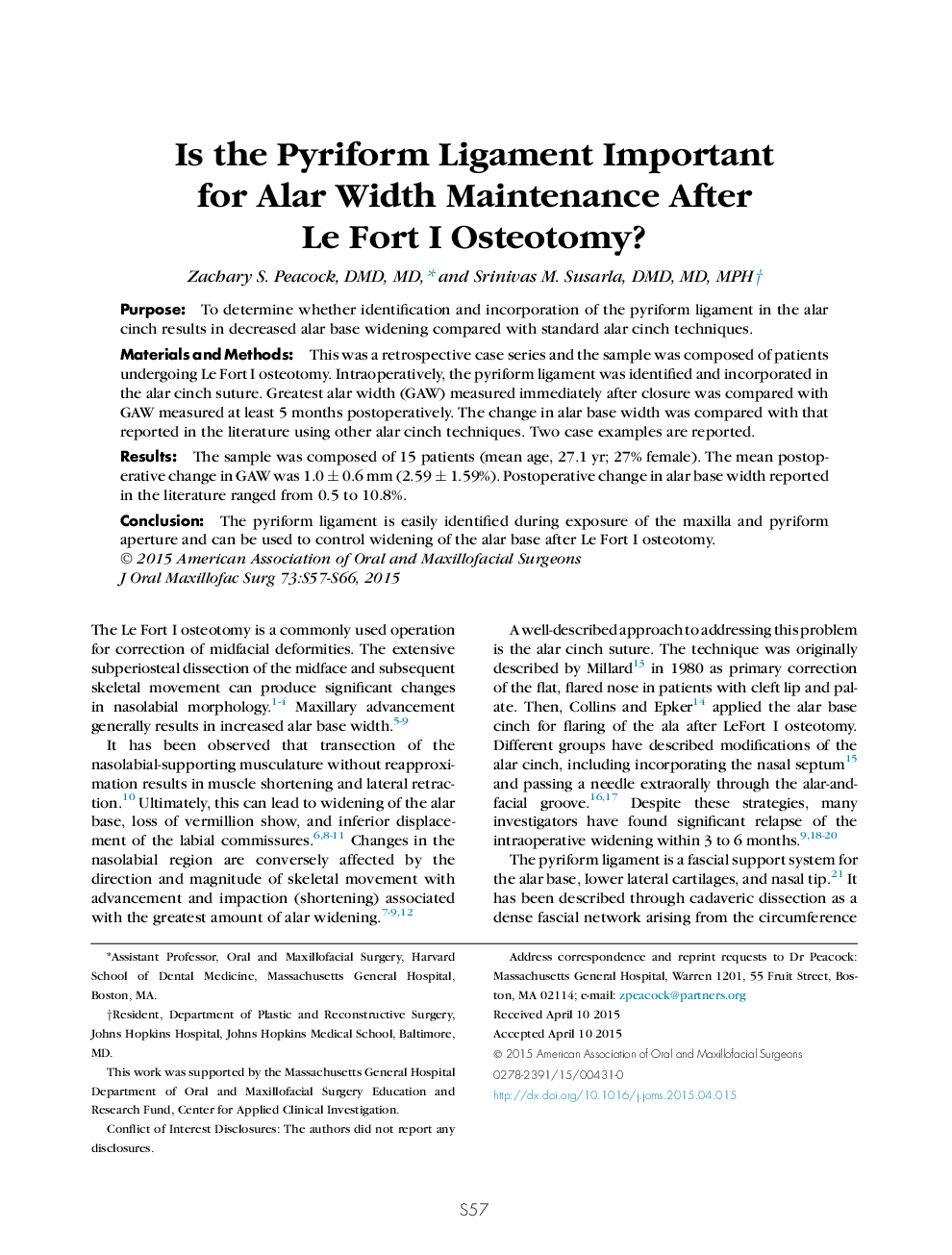| Article ID | Journal | Published Year | Pages | File Type |
|---|---|---|---|---|
| 3152119 | Journal of Oral and Maxillofacial Surgery | 2015 | 10 Pages |
PurposeTo determine whether identification and incorporation of the pyriform ligament in the alar cinch results in decreased alar base widening compared with standard alar cinch techniques.Materials and MethodsThis was a retrospective case series and the sample was composed of patients undergoing Le Fort I osteotomy. Intraoperatively, the pyriform ligament was identified and incorporated in the alar cinch suture. Greatest alar width (GAW) measured immediately after closure was compared with GAW measured at least 5 months postoperatively. The change in alar base width was compared with that reported in the literature using other alar cinch techniques. Two case examples are reported.ResultsThe sample was composed of 15 patients (mean age, 27.1 yr; 27% female). The mean postoperative change in GAW was 1.0 ± 0.6 mm (2.59 ± 1.59%). Postoperative change in alar base width reported in the literature ranged from 0.5 to 10.8%.ConclusionThe pyriform ligament is easily identified during exposure of the maxilla and pyriform aperture and can be used to control widening of the alar base after Le Fort I osteotomy.
